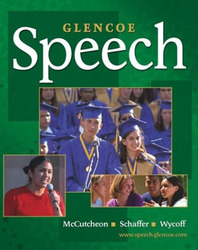
SpeechChapter 11: Effective LanguageOverviewUsing effective language when you speak means using carefully chosen words and phrases to communicate your ideas in a way that will make a good impression. Unlike the written word, which allows readers time to think about and digest what they are reading, the spoken word leaves listeners very little time to consider what they are hearing; they must "get it" the first time. Accuracy of language (using words that say exactly what you mean) and economy of language (carefully managing the quantity of words you use) are two qualities that will improve your use of spoken language. Imagery makes your speech come alive by creating pictures in the minds of your audience. Comparison imagery illustrates similarities through picturesque language. The most common forms of comparison imagery are metaphor, simile, and allusion. Contrast imagery sets up opposition for effect, often as antithesis, oxymoron, and irony. Exaggeration imagery, when used in the appropriate setting, accentuates the spoken word in forms such as hyperbole, understatement, and personification. Repetition of sound is another clever device that can be added to speech as alliteration, assonance, and consonance. Always avoid jargon, sexist language, and shocking or obscene language. |  |















